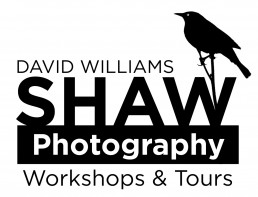A piece I wrote for the Digital Photography School was published yesterday, and it drew a quick response. Many comments have been made, both praising the piece, and questioning some of what I claimed in the article. That always makes me happy. Whether I’ve touched a nerve, pleased someone with what I wrote, or angered someone else, at least I know I made them feel something, and I think that’s the point of both writing and photography. To get people to experience… something.

But how do we do that with photography in a world that is inundated with images? How do we make our own images more than all those others out there?
Well, by being creative of course!
Yeah, but how?
Ummm. Well, uh… You make something new and different!
But how?
Yeah…
Well it can go on that way indefinitely, and in my own head, it does… ad naseum.
The point here is that you can’t simply be creative because you want to. Aperture and shutter speed and ISO and exposure compensation and focal length and all the other technical aspects of photography are relatively straight-forward to teach and learn, but creativity? Not so much.
If you are reading an article entitled “5 Creative Techniques to Improve Your Photography” and then go out and follow those techniques, are you really being creative? I don’t know, maybe? Maybe not?
Now I don’t want to dismiss all the technical aspects of photography because I believe understanding them, knowing them, provides us the tools to be creative. After all, you can’t very well make a purposely low-key image if you don’t understand exposure. And you can’t make a blur, if you don’t know what shutter speed is. You need to know how aperture, shutter speed, and ISO impact your image. Then, and only then, can you start envisioning the outcome you want, long before you click the shutter.

Okay, okay, you get it. But what about that next step? What about creativity, can you learn it?
Yes, you can. But it’s hard because it isn’t formulaic.
In that piece I recently wrote for DPS, I noted that becoming creative is hard, but it’s not impossible. There are two things I do to take the creative spark (the desire to make something new), and turn it into the smooth running internal combustion engine of full-blown creativity.
- You need fuel. Inspiration.
For me, I read. I’m a huge fan of photographer and creative thinker David duChemin. His books like “Vision and Voice”, and “Within the Frame”, are staples on my book shelf and I pick them up whenever I need to break out my rut. Another great photographic philosopher and thinker is Guy Tal. His book “More than a Rock” quite literally changed my approach to photography. And there are others like “The Tao of Photography” and “The Zen of Creativity” which take a more cerebral approach to art and photography. Jim Brandenburg’s “Chased by the Light” is not only full of great images, but is a creative endeavor of its own.
So I draw inspiration from the work of others. This is just a small list from the many books, articles, websites, and discussions with other photographers and artists that provide the fuel for the spark.

2. You need to practice.
Just go out and make images. Seriously, just go out and make images. A LOT of images. Do it from your living room if you need to, but make photos. Sit there for awhile with your camera up to your eye and scan around. Look at how elements in a frame fall together, how the colors match, how angles criss and cross.
Think through your shots. Consider depth of field and shutter speed, and exposure. Look at a scene, and say “How would this look best?” and then make it happen.
One of my favorite photographers, Paul Nicklen in his ebook “Photographing Wild” (which I can’t seem to find available anymore… sadly), advocates for a 20-60-20 process in photography. The first 20% is the safe shots, the gimmes, the ones he needs to tell his story and satisfy his editors. The 60% is where he takes the next step. He experiments and does the wild things that may or may not work. And the final 20% is to take the image that much further. What else could be done that hasn’t been done? A crazy long shutter drag handheld or a ultra-low key shot are a just a couple of examples. The final 20% will have a very high failure rate, but that doesn’t mean 100%. And those that succeed, may just be something special.
Since I first read “Photographing Wild”, I’ve tried to apply the 20-60-20 approach it in my own photography. Sometimes it works, sometimes it doesn’t, but it always pushes me just a bit further. Where, of course, I screw up a lot.
And maybe being willing to screw up almost all the time really is the key to being creative.
In fact, I think it is.
Seriously, go screw up, and don’t give a lick what anyone else thinks.

You must be logged in to post a comment.